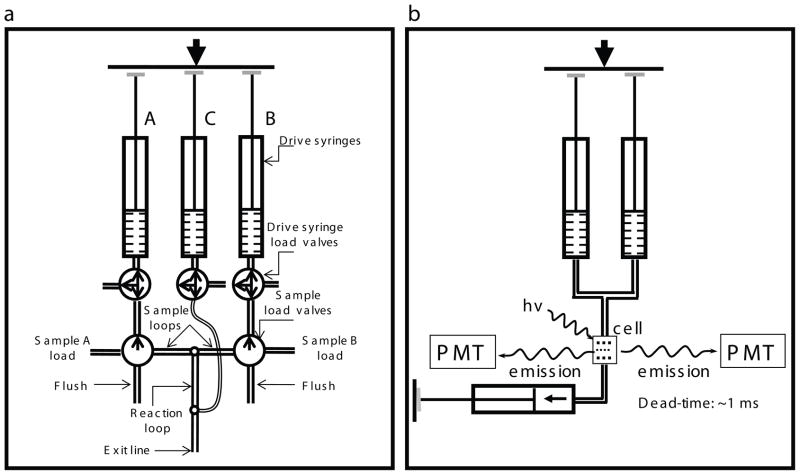Fig. 2.1.
Instrumental designs for the rapid kinetic studies. a) Chemical quenched-flow RQF-3 (www.kintek-corp.com, figure kindly provided by Prof. K.A. Jhonson). Sample A and Sample B are loaded in sample loops from the load ports via a three way valve. Upon firing the instrument, solution A and B are forced through the delay line by water from the drive syringes A and B, and then reactants are mixed in the valve to start the reaction. The reaction mix flows through the selected delay line and mixed with the quench solution from syringe C after predetermined time intervals. The quenched sample is collected into a tube from the exit line. Different length delay lines are selected through an eight – way valve for reaction times in the range of 2–100 msec by selecting different reaction loops. b) Stopped-flow instrument. The KinTek stopped flow has a stable light source and sensitive detection system that can measure absorbance and fluorescence simultaneously. There are two channels for fluorescence detection, and three drive syringes, but in normal mode of operation two syringes are connected (those shown) and used to drive mixing of two reactants A and B into the observation cell. Reaction time is under computer control allowing times from few msec to several minutes. The instrument dead-time is determined as outlined in www.kintek-corp.com.

